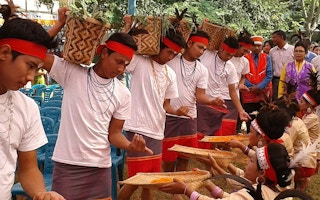A new $100 million initiative will help indigenous peoples and local communities in rural areas secure rights to their traditional lands.
The International Land and Forest Tenure Facility, formally launched last week, was conceived by the Rights and Resources Initiative (RRI) in 2010 as a mechanism for scaling up recognition of rights to collective lands and forests.
After four years of design and consultation, the Tenure Facility operated six pilot projects in Africa, Asia, and Latin America before formally launching October 3 with the support of the Ford Foundation, the Norwegian and Swedish governments, the Climate and Land Use Alliance and Acacia.
The tenure facility will now invest at least $10 million a year for ten years, with an aim to secure at least 40 million hectares of forests and rural lands for local and indigenous communities.
“Inequality is the greatest challenge of our time and we can measure its detrimental effects on the economic, social and environmental progress across the globe,” said Darren Walker, president of the Ford Foundation, in a press release.
“Strengthening and enforcing the rights of Indigenous Peoples and local communities to manage their own forests and lands rebalances the equation.
By focusing on this issue the global community has the ability to address climate change and entrenched poverty, promote sustainable development, and even achieve a lasting peace in places suffering some of the world’s most unrelenting conflicts.”
According to the Tenure Facility’s backers, if the initiative hits its 40 million hectare target, it will prevent the loss of one million hectares of forests and avoid the emissions of more than 500 million tons of carbon dioxide.
“
Inequality is the greatest challenge of our time and we can measure its detrimental effects on the economic, social and environmental progress across the globe.
Darren Walker, president, Ford Foundation
But the potential to help mitigate climate change is far greater given that roughly a quarter of the 54.5 billion tons of above ground carbon stored in the world’s tropical forests lies within “collectively managed territories” of indigenous peoples and local communities.
A growing body of research shows that territories managed by traditional and indigenous peoples have lower deforestation and degradation rates than adjacent areas, suggesting that securing rights to these lands for these peoples can be an effective climate change intervention.
“Research shows time and time again that Indigenous Peoples are the best stewards of their lands, and have been tirelessly maintaining the resources we all depend on for centuries,” said Nonette Royo, the Tenure Facility’s new executive director, in a statement.
“Indigenous Peoples and local communities offer a sustainable solution to saving the world’s forests.” added Carin Jämtin, director general of the Swedish International Development Cooperation Agency (Sida). “The Tenure Facility gives these often-unsung forest stewards an opportunity to partner with governments to secure and protect their forests.
The new organization provides a powerful solution to save the world’s forests from the ground up—keeping a lid on the carbon they contain and sheltering the communities they support.”
Underscoring the importance of the initiative, on the same day the Tenure Facility officially launched, RRI published a report showing that the most common cause of land conflicts in Southeast Asia “is when companies and governments force communities from their customary lands to make way for private investments in land-based sectors like agriculture, mining, forestry and hydroelectric power”
“These conflicts occur in all types of economic developments—from palm oil plantations in Indonesia, to sugar plantations in Cambodia, to energy projects in Myanmar,” said RRI.
This story was published with permission from Mongabay.com.










